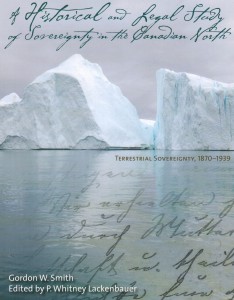In 1919 an Arctic promoter devised a scheme to convert Baffin Island to a vast reindeer ranch, bigger and more spectacular than anything in Texas or Argentina. More than 100,000 square kilometres of tundra were leased as ranchlands. The scheme collapsed by 1923 – the reindeer died – but the promoter, Manitoba-born explorer Vilhjalmur Stefansson, proved the venture was at least nutritionally sound by living on an all-meat diet for an entire year. Stefansson lived to 87.
The Baffin ranches and other believe-it-or-not episodes are detailed in A Historical and Legal Study of Sovereignty in the Canadian North, an encyclopedic work rich in compelling anecdotes. It documents decades of schemes – some tragic, some comic – to plant the flag north of the 60th parallel and make the Arctic pay.
“Stefansson believed that the Arctic region had intrinsic values and potentialities of its own which had not been fully appreciated but would become more evident as time went on,” Sovereignty notes; “He started from the premise that Arctic lands, and the Arctic region in general, were soon going to become much more important”. Diamond mines and international air routes came later.
Sovereignty represents the life work of Gordon Smith, an Alberta historian who devoted decades to Arctic research till his death fifteen years ago at 82. Smith’s research is edited by P. Whitney Lackenbauer, an award-winning Arctic writer whose past work has been reviewed in this column. The result is a sweeping account of the Arctic story detailing attempts to manage a mammoth region that remains a defining feature of the Canadian experience, even if most Canadians have never visited.
Readers learn of the Bernier Expedition, a failed 1903 scheme by a Québec sea captain to become the first man to reach the North Pole. The idea was to put a steamship “in just the right place north of Alaska” and simply drift close enough to the Pole to get there on foot. It didn’t work. Parliament spent $200,000 on the venture. “Was this steamer ballasted with sugar?” asked one MP; the expedition traveled with more than seven tons of sugar; 8500 cigars; and 15 gallons of liqueur and champagne.
And there was the tragic Greely Expedition, an 1882 venture led by a U.S. cavalry lieutenant to explore Ellesmere Island. Of a party of 25 men, all but 7 starved to death. One was shot for stealing food. The scheme was plagued by “incredible bad luck and bungling”, Sovereignty recounts.
Canada’s Arctic story, above all, is one of indifference and half-measures. Parliament took control of Arctic lands from the Hudson’s Bay Company from 1870, yet no federal police depot was built in the region for another twenty years. When American shippers began harvesting whales in the Arctic it wasn’t ecology that prompted complaints: “Is the government aware that a considerable trade is done by United States whalers at the mouth of the Mackenzie River without any duty being paid?” one MP asked in 1897.
No senior government official of any prominence stepped foot in the Arctic till 1956, when Governor General Vincent Massey toured the Northwest Territories to be photographed on a dog sled. “I wished to go for three reasons,” Massey recalled in his memoirs. “First, to visit the natives”; Second, “to exploit the area economically”; “Thirdly, to show the flag.”
So little has changed.
By Holly Doan
A Historical And Legal Study of Sovereignty in the Canadian North: Terrestrial Sovereignty 1870-1939, by Gordon W. Smith; edited by P. Whitney Lackenbauer; University of Calgary Press; 512 pages; ISBN 9781-55238-7207; $39.95






